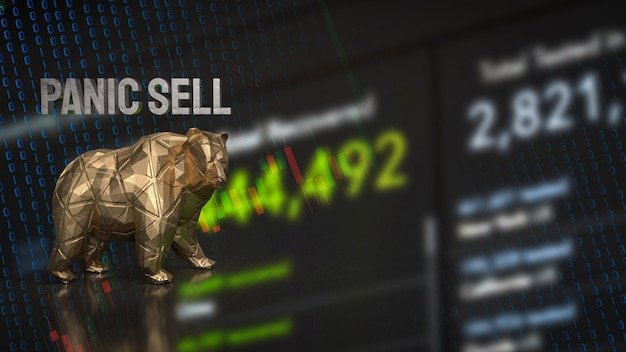Investing in Cybersecurity: Trends & Opportunities After Cyberattacks

Investing in cybersecurity sees growing interest due to escalating cyber threats, presenting opportunities in companies providing security solutions, incident response, and compliance services amid a landscape increasingly shaped by sophisticated attacks.
The surge in cyberattacks has made investing in cybersecurity: trends and opportunities in a post-cyberattack landscape a critical consideration for investors seeking growth and stability in an increasingly digital world.
Understanding the Growing Need for Cybersecurity Investments
The digital landscape is constantly evolving, and with it, the sophistication and frequency of cyberattacks. This escalating threat has created a significant need for robust cybersecurity measures, making cybersecurity investments more critical than ever before.
As businesses and individuals become more reliant on digital technologies, they also become more vulnerable to cyber threats. This vulnerability is not just a technological issue; it’s a financial one. The cost of cybercrime is estimated to reach trillions of dollars annually, encompassing not just the cost of recovery and remediation but also lost productivity, reputational damage, and legal fees.
The Financial Impact of Cyberattacks on Businesses
The financial fallout from a significant cyberattack can be devastating for a business, potentially leading to long-term financial instability and viability concerns.
- Direct Costs: Ransomware payments, data recovery, system repairs, and legal fees.
- Indirect Costs: Downtime, loss of productivity, damage to reputation, and customer churn.
- Long-Term Costs: Increased insurance premiums, ongoing security enhancements, and potential regulatory fines.
The imperative to shield against the financial damage from cyberattacks is a key driver behind the increased investment in cybersecurity solutions and services, as businesses evaluate potential returns on investment and the benefits of protection in an increasingly threatened digital environment.
In conclusion, the growing need for cybersecurity investments is not just about technology; it’s a fundamental requirement for protecting financial stability and ensuring the continued operation and growth of businesses in the digital age. As cyber threats continue to evolve, the importance of strategic cybersecurity investments will only increase.
Key Trends Shaping Cybersecurity Investment
The cybersecurity investment landscape is subject to various trends that define strategies and opportunities. Shifts in technology and threat landscapes, the regulatory environment, and enterprise adoption significantly influence investment decisions.
These trends highlight where investments in cybersecurity need to focus to keep pace with the current and future challenges of safeguarding digital assets and infrastructure.

Cloud Security Solutions
The shift to cloud computing has created new cybersecurity vulnerabilities and requirements for businesses, spurring development of cloud security solutions.
- Data Encryption: Crucial for securing data both in transit and at rest within cloud environments.
- Identity and Access Management: Controlling who has access to what resources and when.
- Threat Detection and Response: Using AI and machine learning to identify and respond to threats in real time.
Investing in tools and platforms that provide detailed cloud visibility, compliance monitoring, and automated security responses are essential for organizations that rely on cloud-based services to protect their infrastructure and data from evolving threats.
In conclusion, understanding the key trends shaping cybersecurity will lead to wise investments in an environment defined by constant tech advances and strategic decision-making that protects digital assets and strengthens security.
Identifying Cybersecurity Investment Opportunities
Identifying lucrative opportunities within the cybersecurity sector requires a keen understanding of emerging technologies, market demands, and the evolving threat landscape. Investors must recognize which areas of cybersecurity are poised for significant growth and return.
These opportunities span various sectors, from specialized software development to consulting services, each driven by the increasing complexity of cyber threats and the critical need for robust security solutions.
Investing in Threat Intelligence Platforms
The demand for threat intelligence platforms has surged as businesses seek to better understand and preemptively defend against emerging cyber threats.
Investing in this segment can involve supporting companies that provide advanced threat detection, automated response capabilities, and real-time updates on the latest security threats.
Conclusively, recognizing and capitalizing on cybersecurity investment opportunities requires insights into emerging technologies, market dynamics, and the critical need for sophisticated security solutions to protect against ever-increasing cyber threats.
Analyzing the ROI of Cybersecurity Investments
Measuring the return on investment (ROI) for cybersecurity is complex because the benefits are often realized in the avoidance of negative outcomes, such as data breaches and cyberattacks. Demonstrating the value of cybersecurity investments requires a broad evaluation of the costs and potential losses prevented.
Beyond financial considerations, assessing the effectiveness of cybersecurity measures also includes evaluating the impact on business operations, compliance obligations, and stakeholder confidence.

Quantifying Avoided Costs and Potential Losses
One method for calculating the ROI of cybersecurity is to quantify the potential losses avoided by implementing robust security measures. This involves assessing the risk and potential impact of various cyber threats and then estimating the costs of those threats if they were to materialize.
By subtracting the actual cost of the cybersecurity investment from the estimated potential losses avoided, businesses can calculate an ROI that demonstrates the potential value of their security efforts.
In conclusion, quantifying the ROI of cybersecurity investments involves evaluating tangible factors and broader strategic benefits. This comprehensive approach ensures that decision-makers understand the true value and necessity of maintaining a strong security posture in the face of evolving cyber threats.
The Role of Government Regulations and Compliance
Government regulations and compliance standards significantly influence cybersecurity investments as businesses strive to meet legal requirements. Regulations often mandate certain security practices, influencing the adoption of specific technologies and services.
These mandates not only drive investment in compliance solutions but also shape the overall cybersecurity market by setting minimum standards and encouraging organizations to enhance their cyber defenses proactively.
Impact of GDPR and CCPA on Cybersecurity Spending
The General Data Protection Regulation (GDPR) in Europe and the California Consumer Privacy Act (CCPA) in the United States have both had a profound impact on cybersecurity spending.
- Data Protection Officers (DPOs): Companies must appoint DPOs to oversee data protection strategies and ensure compliance with GDPR and similar regulations.
- Data Breach Reporting: Strict reporting requirements force companies to invest in systems that can quickly detect and report data breaches within specified time frames.
- Enhanced Security Measures: GDPR and CCPA mandate that businesses implement appropriate technical and organizational measures to protect personal data, prompting investments in encryption, access controls, and security audits.
By complying with these regulations, companies not only avoid penalties but also improve their data management practices and cybersecurity standards.
Conclusively, government regulations and compliance requirements increasingly drive cybersecurity investments as businesses seek to meet legal requirements and protect data, ensuring compliance, avoiding penalties, and enhancing overall data management and cybersecurity standards.
Future Outlook: Cybersecurity as a Growth Sector
Cybersecurity is set to remain a growth sector driven by the relentless increase in cyber threats, the expansion of digital infrastructure, and the growing importance of data protection. Technological advancements provide new options, but also create novel attack vectors.
As a result, the demand for cybersecurity solutions will continue, ensuring that companies specializing in security services, software development, and consulting remain valuable and attractive investment targets.
Emerging Technologies Driving Cybersecurity Investments
Several technologies are poised to drive cybersecurity investment over the coming years.
- Artificial Intelligence (AI): AI is being used to automate threat detection, enhance incident response, and improve overall security posture.
- Blockchain Technology: Blockchain offers the potential to enhance data security through decentralized and immutable record-keeping.
- Quantum Computing: While still in its early stages, quantum computing could revolutionize cryptography and data security, leading to new security protocols and technologies.
Investing in these advancing technologies can provide innovative solutions and protect against emerging threats as cybersecurity adapts with digital innovations.
In conclusion, cybersecurity should sustain a growth outlook encouraged by the increase in threats, the growth of digital infrastructures, and data protection needs. Investment in technological development brings unique strategies and innovations within cybersecurity.
| Key Aspect | Brief Description |
|---|---|
| 🛡️ Cybersecurity Needs | Growing digital threats drive cybersecurity investments. |
| 📈 Key Investment Trends | Shifts in tech and compliance shape investment strategies. |
| 💡 Investment Opportunities | Emerging tech and threat intel offer potential gains. |
| ⚖️ Regulatory Impact | Compliance standards influence adoption and spending. |
Frequently Asked Questions (FAQ)
▼
Cybersecurity investment is critical due to the increasing frequency and sophistication of cyberattacks, which can cause severe financial and operational damage to businesses and individuals.
▼
Key areas to consider include cloud security, threat intelligence platforms, AI-driven security solutions, and compliance technologies, all of which address different aspects of cyber defense.
▼
Regulations like GDPR and CCPA mandate specific security measures, driving investment in technologies and practices that ensure compliance and protect personal data.
▼
Cybersecurity is expected to continue growing significantly, driven by increasing cyber threats, the expansion of digital infrastructure, and the ongoing need for data protection.
▼
Emerging technologies such as AI, blockchain, and quantum computing are driving investments by offering new ways to automate threat detection, enhance data security, and potentially revolutionize cryptography.
Conclusion
Investing in cybersecurity in the face of increased cyber threats presents significant opportunities with emerging technologies, regulatory influences, and essential solution demands which make cybersecurity a critical area for investors.





